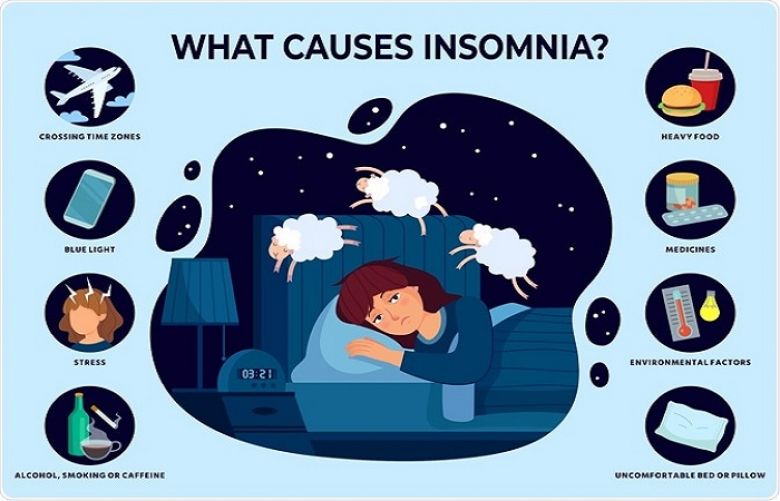Insomnia is a sleep disorder in which you have trouble falling and/or staying asleep. Insomnia has been associated with concurrent physical and psychiatric problems and may be a risk factor for the onset of depressive or anxiety related illnesses.
A recent report estimates that 60 to 70 million Americans suffer from some form of sleep problems. The problem of insomnia is also becoming common in Pakistan. More than 30% of the Pakistani population suffers from insomnia.
In Pakistan rampant use of benzodiazepines and other psychoactive drugs is an additional factor that may be related to insomnia and which may have additional health implications. People over the age of 60 are suffering from insomnia. Women are up to twice more likely to suffer from insomnia than men. Approximately 35% of the insomniacs have a family history of insomnia. Research shows that 90% people who suffer from depression also experience insomnia.
According to Dr. Farzana insomnia is becoming a common problem in Pakistan. This disease is due to the depression and anxiety which is increasing in the age group of 20-30.
Electronic searches of three databases , PubMed, Cochrane library and worldwide science were performed from 2010 to 2020 before april, in total seven studies were included for evaluating insomnia in South Asian region among university students. The prevalence rate of the insomnia of the seven studies ranged between 35.4% and 70%. The prevalence of insomnia among university students was 52.1%.
The review emphasized that insomnia in university students might be a common health issue to give full concentration in their studies and academic performance.
The cross-sectional survey of 1488 adults from five urban and semi urban communities of Karachi, Pakistan , was conducted from August 2007 to july 2008. All face to face interviews were conducted in urdu and data was entirely based on self- reported information by the respondents. Of the total 466 respondents reported insomnia out of which 141 reported using sleep medicines. These medicines were most frequently prescribed by some family physician. Those who experienced financial problems were 59% more likely to report sleep problems.
A march 2017 NewYork Times Article highlighted a very real danger of disruption to our sleeping patterns : an increased risk of mental illness.Though we have known for sometime sleep disorder and mental illness are linked , we shouldn’t jump to the conclusion that one simply causes each other. Infact, both of these problems are different aspects of the some treatable conditions.
A cross- sectional study was done in the Aga Khan University Hospital between February 2013 and june 2013. Patients 60 years and above were recruited through non- probability consecutive sampling. Information was collected on a pretested structured questionnaire on demographics , insomnia symptoms , medical co- morbidities, lifestyle factors and sleep disorders. The mean age of the participants was 65.68 years, and 38.80% of the participants were male and 61.20% were female. The prevalence of insomnia was 42.1%. It was more common in females than males. Increasing age , being divorced/ widowed and having an average household income were significantly related to insomnia. The other factors associated with insomnia were Gastro Esophageal Reflux disease, depression, caffeine consumption and cigarette smoking close to bed time. The study showed that older adults with multiple diseases were at high risk of insomnia. Certain lifestyle practices enhanced the risks , hence physicians should incoroporate sleep history to target insomnia.
A questionnaire based study was done on 135 medical students of Nishtar medical university , Multan choen on the basis of random sampling to test the prevalence of insomnia using Athens Insomnia Scale (AIS). Out of these students 75 were males and 60 were females. Students were interviewed to obtain information about age, sex, and academic year of education.
According to Athens insomniac scale scoring , 55 students were insomniac while 80 were non insomniac. Out of 55 insomniac students, 23 were males while 32 were females. The prevalence of insomnia in medical students was found to be increased with the increasing age. It means that females have more prevalence of insomnia than males.
To treat insomnia, counselling has been done , cognitive behavioral therapy, and prescriptions medications have been given.Anyone who experiences ongoing trouble sleeping and feels that it is affecting their daily life should see a doctor, who can hep identify and recommend a solution.
A study of Harvard Medical University found that cognitive behavioral therapy was more effective at treating insomnia than prescription sleep medication.

